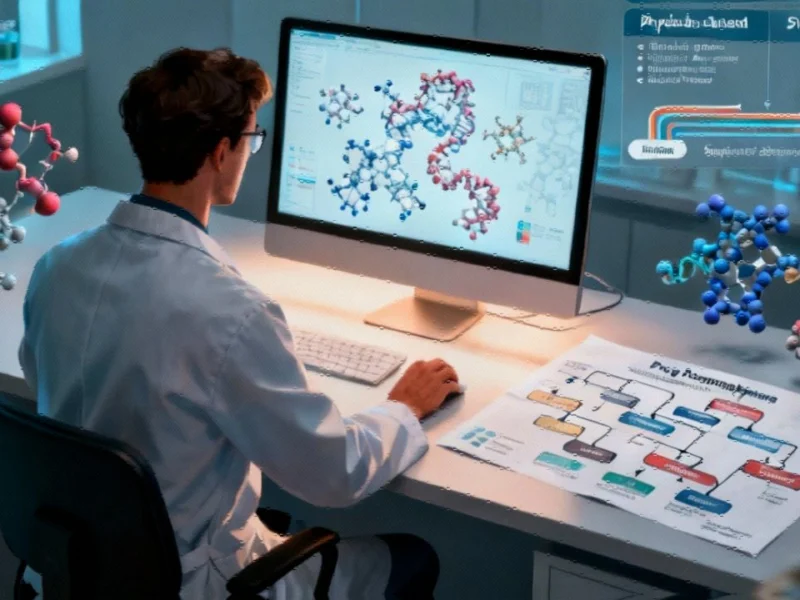The Drug Discovery Challenge
In the high-stakes world of pharmaceutical development, the initial screening phase represents both enormous opportunity and significant bottleneck. Traditional drug discovery methods can consume billions of dollars and decades of research before yielding viable clinical candidates. The emergence of artificial intelligence promised to revolutionize this process, yet until recently, machine learning approaches have struggled with a fundamental limitation: the inability to reliably predict molecular interactions beyond their training data.
Addressing the Generalization Problem
Dr. Benjamin P. Brown of Vanderbilt University School of Medicine has pioneered a novel approach that directly confronts this challenge. His research, detailed in a groundbreaking Proceedings of the National Academy of Sciences paper, introduces a deep learning framework specifically designed to overcome what he terms the “generalizability gap” in structure-based drug discovery.
“Current ML methods can unpredictably fail when they encounter chemical structures outside their training experience,” Brown explained. “This limitation has severely constrained their practical utility in real-world drug discovery scenarios where novel compounds are constantly being explored.”
A Targeted Architectural Solution
Unlike conventional models that learn from complete 3D structures of proteins and drug molecules, Brown’s framework employs a task-specific architecture focused exclusively on the interaction space between molecules. This constrained approach forces the model to learn transferable principles of molecular binding rather than relying on structural shortcuts that fail to generalize.
The model captures distance-dependent physicochemical interactions between atom pairs, creating a more robust foundation for predicting binding affinities across diverse molecular structures. This represents a significant advancement in computer-aided drug design methodologies that could accelerate early-stage compound screening.
Rigorous Validation Protocol
Perhaps most impressively, Brown developed an evaluation protocol that simulates real-world discovery scenarios. By excluding entire protein superfamilies and their associated chemical data from training sets, he created challenging tests of the model’s generalization capabilities.
“We asked the critical question: If a novel protein family were discovered tomorrow, would our model make effective predictions?” Brown noted. The results demonstrate substantial improvement over existing methods, offering new hope for more reliable AI-driven drug discovery.
Broader Industry Implications
This breakthrough comes amid significant industry developments in computational approaches to complex biological problems. As pharmaceutical companies increasingly rely on computational methods, the need for generalizable AI frameworks becomes increasingly urgent.
The timing is particularly relevant given recent technology challenges facing AI implementation across various sectors. Brown’s work demonstrates how targeted architectural decisions can overcome fundamental limitations that have plagued broader AI applications.
Future Directions and Applications
While Brown’s current framework focuses specifically on scoring compound interactions, he acknowledges this represents just one component of the structure-based drug discovery pipeline. His laboratory continues to explore modeling challenges related to scalability and generalizability in molecular simulation.
The research aligns with broader market trends toward specialized AI solutions that address specific scientific challenges rather than attempting one-size-fits-all approaches.
According to related innovations in the field, the next generation of drug discovery tools will likely incorporate similar constraint-based architectures to ensure reliability across diverse molecular targets.
Path Forward for Computational Drug Discovery
Brown’s work provides a clarified roadmap for overcoming one of the most persistent obstacles in computational pharmacology. By prioritizing generalizability through architectural constraints, his approach offers a more dependable foundation for machine learning applications in drug discovery.
As the pharmaceutical industry continues to embrace computational methods, frameworks like Brown’s will be essential for translating the promise of AI into practical tools that accelerate the development of new therapeutics while reducing costs and failure rates in the critical early stages of drug development.
This article aggregates information from publicly available sources. All trademarks and copyrights belong to their respective owners.



